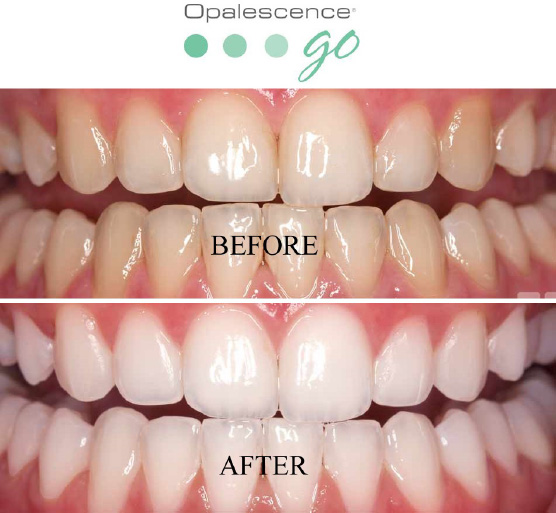Welcome to the world of preventing cavities with dental sealants! Dental sealants are a fantastic way to protect your teeth, especially for kids and teenagers who are more susceptible to cavities. By applying a thin plastic coating to the chewing surfaces of your back teeth, dental sealants create a barrier that keeps out harmful bacteria and food particles. With their long-lasting protection, dental sealants can significantly reduce the risk of tooth decay and ensure your smile stays healthy for years to come. So, if you want to keep those pearly whites shining bright, consider adding dental sealants to your oral hygiene routine. Have you ever wondered how to prevent cavities effectively, especially for children and teenagers? One highly effective method is through the use of dental sealants. Let’s dive into the details of how dental sealants can help protect your teeth and prevent cavities for years to come.

Understanding Dental Sealants
Dental sealants are thin, plastic coatings that are applied to the chewing surfaces of the back teeth, also known as molars and premolars. These are the areas where decay most often occurs due to their grooves and pits, making them harder to clean thoroughly with regular brushing. The sealant acts as a protective shield, preventing food particles and bacteria from getting trapped in these difficult-to-reach areas.
By forming a barrier against decay-causing agents, dental sealants provide an extra layer of protection for your teeth, reducing the risk of cavities significantly. This preventive measure is particularly beneficial for children and teenagers who may be more susceptible to tooth decay due to their dietary habits and oral hygiene practices.
How Dental Sealants Work
The application process of dental sealants is quick, painless, and non-invasive. Here’s how it works:
- Cleaning: The tooth surface is thoroughly cleaned and dried to ensure optimal adhesion of the sealant.
- Etching: A special gel is applied to the tooth to create a rough surface that allows the sealant to bond effectively.
- Sealing: The sealant material is carefully painted onto the chewing surface of the tooth, where it flows into the grooves and pits.
- Curing: A special light is used to harden the sealant, creating a strong, protective barrier.
Once the sealant is in place, it effectively seals off the vulnerable areas of the tooth, preventing decay from taking hold and forming cavities.
The Benefits of Dental Sealants
Dental sealants offer a range of benefits that make them a valuable addition to your oral health routine. Here are some of the advantages of using dental sealants:
- Effective Cavity Prevention: Dental sealants provide a protective shield against decay-causing bacteria and food particles, reducing the risk of cavities.
- Long-Lasting Protection: Sealants can last several years before needing reapplication, providing continuous protection for your teeth.
- Non-Invasive Procedure: The application process is quick, painless, and does not require any drilling or removal of tooth structure.
- Cost-Effective: Preventing cavities with sealants is often more affordable than treating cavities with fillings or other dental procedures.
- Suitable for All Ages: While most commonly used for children and teenagers, adults can also benefit from dental sealants to protect their teeth.
By incorporating dental sealants into your oral hygiene routine, you can enjoy healthier teeth and a reduced risk of cavities in the long term.
Who Benefits Most from Dental Sealants
While dental sealants can benefit individuals of all ages, certain groups can particularly benefit from this preventive measure. Here are some groups that benefit the most from dental sealants:
- Children and Teenagers: The grooves and pits of molars and premolars are difficult to clean thoroughly, making children and teenagers more prone to cavities in these areas. Sealants provide an added layer of protection during their formative years.
- Individuals at High Risk of Cavities: Those with a history of cavities, poor oral hygiene habits, or a diet high in sugary and acidic foods can benefit from the extra protection that sealants provide.
- Orthodontic Patients: Individuals undergoing orthodontic treatment with braces may find it challenging to clean their teeth effectively. Sealants can help protect their teeth during this period.
- Adults with Deep Grooves: Some adults have deep grooves and pits in their molars that make them more susceptible to decay. Sealants can help seal these vulnerable areas, reducing the risk of cavities.
By identifying those who can benefit the most from dental sealants, you can take proactive steps to protect your teeth and prevent cavities effectively.
Maintaining Dental Sealants
While dental sealants offer long-lasting protection, it is essential to take proper care of them to ensure their effectiveness over time. Here are some tips for maintaining your dental sealants:
- Regular Dental Check-Ups: Visit your dentist regularly for check-ups to ensure that your sealants are intact and providing the necessary protection.
- Avoid Chewing on Hard Objects: Refrain from chewing on hard objects such as ice, pencils, or hard candies, as this can cause the sealants to chip or wear down.
- Practice Good Oral Hygiene: Continue to brush your teeth twice a day, floss daily, and use mouthwash to maintain overall oral health and prevent decay.
By incorporating these maintenance tips into your oral hygiene routine, you can prolong the lifespan of your dental sealants and continue to enjoy their protective benefits for years to come.
Checking the Condition of Your Dental Sealants
Regularly checking the condition of your dental sealants is crucial to ensure that they are still providing the necessary protection for your teeth. Here’s how you can assess the condition of your sealants:
- Visual Inspection: Look in the mirror and check the chewing surfaces of your molars and premolars for any signs of wear, chipping, or peeling of the sealants.
- Run Your Tongue: Gently run your tongue over the sealed areas to feel for any rough patches or uneven surfaces that may indicate damage to the sealant.
- Schedule a Dental Check-Up: If you notice any changes in your sealants or have concerns about their condition, schedule a dental check-up to have them examined by a professional.
By proactively monitoring the condition of your dental sealants, you can address any issues promptly and ensure that they continue to protect your teeth effectively.
Frequently Asked Questions About Dental Sealants
As with any dental procedure, you may have questions about dental sealants and their benefits. Here are some frequently asked questions to provide more information:
Are Dental Sealants Safe?
Yes, dental sealants are safe and have been used for decades to prevent cavities effectively. The materials used in sealants are non-toxic and do not pose any health risks when applied properly by a trained dental professional.
Do Dental Sealants Require Special Care?
While dental sealants do not require special care, it is essential to maintain good oral hygiene practices to ensure their effectiveness. Regular brushing, flossing, and dental check-ups are necessary to keep your teeth and sealants in optimal condition.
How Long Do Dental Sealants Last?
Dental sealants can last several years before needing reapplication, depending on factors such as wear and tear, oral habits, and diet. Your dentist will monitor the condition of your sealants during regular check-ups and recommend reapplication when necessary.
Can Adults Benefit from Dental Sealants?
Yes, adults can benefit from dental sealants, especially if they have deep grooves in their teeth or are at a higher risk of cavities. Sealants can provide added protection for vulnerable areas and reduce the likelihood of decay.
Are Dental Sealants Covered by Insurance?
Many dental insurance plans cover the cost of dental sealants, especially for children and teenagers. It is essential to check with your insurance provider to understand your coverage and any associated costs.
By addressing these common questions about dental sealants, you can make an informed decision about incorporating this preventive measure into your oral health routine.

Conclusion
Dental sealants offer a simple yet effective way to prevent cavities and protect your teeth from decay. By understanding how sealants work, their benefits, and maintenance tips, you can take proactive steps to maintain your oral health and enjoy healthier teeth for years to come. Whether you are a child, teenager, adult, or orthodontic patient, dental sealants can provide valuable protection for your teeth and reduce the risk of cavities. Talk to your dentist about incorporating dental sealants into your oral hygiene routine and take the first step towards a cavity-free smile.


